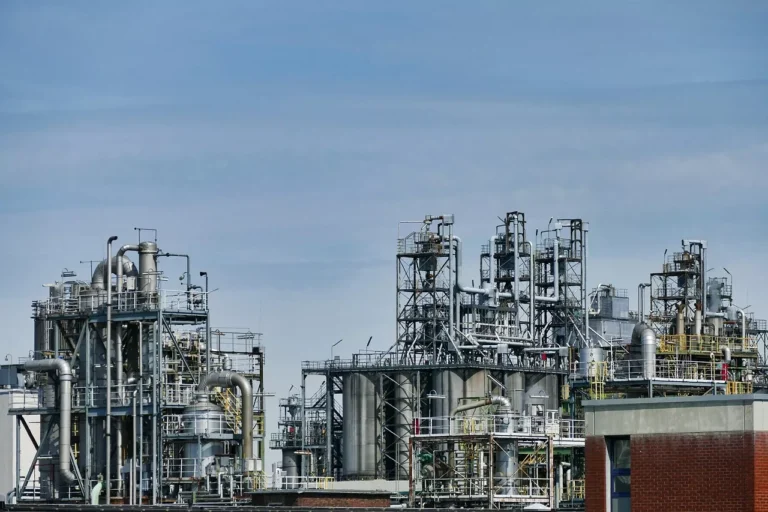
Blake Production Partners with Bridger Photonics to Cut Emissions
Bridger Photonics Inc. (“Bridger”), a global leader in methane emissions detection and quantification technologies, has announced a strategic collaboration with Blake Production Company, Inc. (“Blake Production”) aimed at enhancing the environmental stewardship of oil and gas operations in Northwest Oklahoma. The partnership marks a significant step in the ongoing evolution of emissions monitoring within the upstream energy sector, demonstrating how smaller and independent operators can leverage advanced technology to align with sustainability goals while maintaining operational efficiency.
Founded in 1987, Blake Production is an independent oil and gas company with a long-standing reputation for operational reliability and integrity. Based in Oklahoma, the company has built its business on the principles of responsible resource development and community commitment. Over the years, Blake Production has continuously adapted to changing energy industry dynamics, balancing the need for energy production with increasing expectations for environmental performance and transparency.
In the current energy and regulatory landscape—characterized by growing public scrutiny, tightening environmental regulations, and a broader global push toward emissions reductions—methane has become a focal point. As a potent greenhouse gas with more than 80 times the warming power of carbon dioxide over a 20-year period, methane emissions are under intense examination, particularly in the oil and gas industry. Methane leaks, also known as fugitive emissions, can arise from a range of sources, including pipelines, valves, wellheads, compressors, and storage tanks.
To confront this challenge, Blake Production has partnered with Bridger Photonics to implement aerial methane detection scans across a portion of its asset portfolio. Bridger’s technology allows for rapid, accurate detection and quantification of methane emissions from the air using advanced sensors mounted on aircraft. This aerial scanning method covers extensive areas far more efficiently than ground-based detection techniques and delivers high-resolution, actionable emissions data with precise geolocation capabilities.
According to a spokesperson from Blake Production, the initiative reflects the company’s proactive stance in addressing emissions and enhancing transparency with regulators, investors, and the communities in which it operates.
“Our partnership with Bridger Photonics underscores our dedication and commitment to remaining at the forefront of responsible energy production,” said a company representative. “With Bridger’s cutting-edge technology, we are able to identify and mitigate emissions across our portfolio, which works to strengthen our operations and our commitment to nearby communities. Environmental accountability isn’t just good practice—it’s the right thing to do for the long-term health of our business and our region.”
The aerial surveys conducted by Bridger involve scanning hundreds of well pads, compressor stations, and pipelines in a matter of days—collecting highly granular data that operators can use to pinpoint and prioritize leak repairs. Unlike traditional leak detection and repair (LDAR) methods, which often rely on manual inspections and infrequent monitoring schedules, Bridger’s approach allows for continuous, scalable monitoring that can be customized to an operator’s specific asset layout and risk profile.
Bridger Photonics has emerged as a preferred technology partner for operators looking to comply with evolving methane rules, such as those issued by the U.S. Environmental Protection Agency (EPA) under the Inflation Reduction Act and Methane Emissions Reduction Program. The company’s technology is also aligned with voluntary frameworks like the Oil and Gas Methane Partnership (OGMP) 2.0, which emphasize high-quality data and third-party verification.
Joel Baller, Chief Revenue Officer of Bridger Photonics, praised Blake Production for taking a forward-looking approach to emissions management at a time when many regional operators are seeking practical yet impactful solutions.
“Blake Production is taking a proactive, solutions-focused approach to emissions management,” said Baller. “In today’s environment—where regional operators are facing constrained budgets, limited manpower, and increasing pressure to operate sustainably—our technology enables a smarter path forward. By rethinking long-standing approaches, Blake is leveraging high-quality data to improve efficiency and reduce emissions without adding operational burden.”
This partnership is emblematic of a broader shift in the energy industry where data-driven decision-making and environmental responsibility are no longer exclusive to large multinational corporations. Smaller and mid-sized operators like Blake Production are recognizing the value of integrating emissions data into their operational workflows to mitigate risks, enhance compliance, and demonstrate good governance.
The ability to detect and quantify methane emissions from the air also supports broader industry efforts to meet domestic and international climate targets. Methane mitigation is widely considered one of the fastest and most cost-effective ways to reduce near-term warming. By addressing unintentional leaks and equipment inefficiencies, companies can not only reduce their greenhouse gas footprints but also improve safety and potentially capture lost product that would otherwise be vented or released into the atmosphere.
The collaboration between Blake Production and Bridger Photonics is also expected to provide valuable insights into operational trends and best practices that can inform future technology deployments. For example, identifying patterns in leak frequency or intensity across different facility types can lead to more targeted investments in infrastructure upgrades or maintenance practices.
Furthermore, the partnership sends an important signal to stakeholders—including regulators, insurers, investors, and the public—that regional producers are capable of adopting cutting-edge technologies and integrating them effectively into day-to-day operations. In an industry where reputational risk is increasingly tied to environmental performance, proactive measures such as this can foster trust and long-term viability.
Looking ahead, Blake Production plans to use the findings from the Bridger scans to inform its broader emissions strategy and operational planning. Depending on results, the company may expand aerial monitoring to a greater portion of its asset base or increase scan frequency to ensure continuous improvement.
As the energy transition continues to unfold, collaborations like this demonstrate how innovation and accountability can coexist, even in traditionally emissions-intensive industries. While the path to net-zero is complex and multifaceted, efforts to reduce methane emissions represent an immediate and impactful step that companies of all sizes can take—today.










